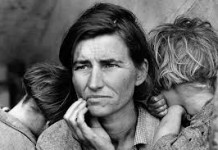By David Trend:
Throughout its existence the United States has shown a strange tendency to turn against itself, dividing citizens against each other with a vehemence rivaling the most brutal regimes on earth. Some have rationalized the resulting crisis of “belonging” in America as an understandable consequence of cultural diversity, economic stress, and global threat. After all, haven’t there always been “insiders” and “outsiders” in every culture? Aren’t competition and aggression wired into human nature? Or is there something peculiar about the personality of the U.S.? Could it be that prejudice is the real legacy of the “American Exceptionalism,” in traditions dating to the genocide of indigenous populations, the subjugation of women, the rise of slavery, the scapegoating of immigrants, and more recent assaults on the poor or anyone falling outside the realm of normalcy?
 I discussed selected aspects of America’s divisive pathology in my book A Culture Divided: America’s Struggle for Unity, which was written in the closing years of the George W. Bush presidency. Like many at the time, I had completely given up on the idea of “common ground” amid the residue of post-9/11 reactionary fervor and emerging economic recession. Media commentators were buzzing constantly about red/blue state polarization. Opinions varied about the cause of the divide, attributing it to factors including regionalism, media sensationalism, partisan antipathy, or all of these combined. Also joining the fray were those asserting the divide was fabricated, with evenly divided elections showing most people in the middle of the curve on most issues. My somewhat contrarian view was that the “problem” shouldn’t be regarded problem at all. After all, America always had been divided––through war and peace, boom and bust. Division was the country’s national brand. But as a book about politics, A Culture Divided didn’t get to the roots or the lived experience America’s compulsive divisiveness.
I discussed selected aspects of America’s divisive pathology in my book A Culture Divided: America’s Struggle for Unity, which was written in the closing years of the George W. Bush presidency. Like many at the time, I had completely given up on the idea of “common ground” amid the residue of post-9/11 reactionary fervor and emerging economic recession. Media commentators were buzzing constantly about red/blue state polarization. Opinions varied about the cause of the divide, attributing it to factors including regionalism, media sensationalism, partisan antipathy, or all of these combined. Also joining the fray were those asserting the divide was fabricated, with evenly divided elections showing most people in the middle of the curve on most issues. My somewhat contrarian view was that the “problem” shouldn’t be regarded problem at all. After all, America always had been divided––through war and peace, boom and bust. Division was the country’s national brand. But as a book about politics, A Culture Divided didn’t get to the roots or the lived experience America’s compulsive divisiveness.
Speaking at the 50th anniversary of the Selma to Montgomery marches, President Barack Obama described America as an incomplete project––a nation caught between ideals of a perfect union and the lingering realities of their failure. While citing advances in civil liberties since the bloody apex of the Voting Rights Movement, Obama also spoke of a federal report issued just days earlier documenting structural racism and misbehavior toward African Americans by police in Ferguson, MO, where months before law enforcement officers had killed an unarmed black teenager. “We know the march is not yet over. We know the race is not yet won,” the President stated, adding, “We know that reaching that blessed destination requires admitting as much, facing up to the truth.” Continue reading “Belonging Where?”









